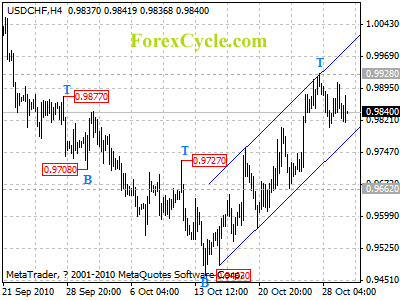By Danielle Franklin
After months of practice and learning, every struggling novice trader begins to wonder whether the decision to enter forex trading was actually a big mistake. Why do other traders make money and I don’t? Do these successful individuals possess any special qualities? Can I improve myself in order to finally start making money? In order to become profitable in forex, you need to not only learn and practice, but work hard in improving yourself.
Below are the major characteristics needed in order to become successful. If you already possess the essential traits – good for you! Just keep practicing and soon you will see the cash flow. If you don’t have the necessary traits yet – don’t give up. Start working on yourself. It is possible to craft yourself into a trader!
So, here goes:
1. Don’t Copy – Copying others is absolutely useless in forex. Every trader is unique and his/her strategies fit their personality and goals. You cannot rely on anyone else but yourself.
2. Be Disciplined – Stick to the plan, even when your self-esteem is over the top. Use your experience and knowledge of the market to make the right decisions, instead of irrational i-can-make-a-million-right-now conclusions, without skipping any important steps in your trading plan.
3. Accept Losses with Grace – Losses are not necessary a bad thing – write down the unfortunate experience in your trading journal, analyze why this happened and voila! You have received one of the valuable lessons by learning from your own mistakes. Practice makes perfect – so don’t freak out over the losses. Instead, learn from it and move on. The main difference between a successful trader and a novice beginner is in accepting the loss. The sooner you learn to lose, the faster you earn money!
4. Be Patient and Reasonable – Know exactly why and when to enter a trade. And here is a great tip – say all those reasons out loud. It is a great way to give a last glance before you make a final click. Don’t expect the profitable opportunities to pop up all day long. Sometimes, it is wise to give it a break and start again the next day with a clear head. Don’t worry about missing out either, because forex market is always on the move. Not catching the big wave doesn’t mean you will be left out without any profits for ages!
5. Control Your Money – Forex is not just about making more and more money, but also keeping what you have already made! You need to have very strict money management rules in order to keep your losses at minimum: * Never trade what you cannot lose * Determine your target gains and losses before opening a position * Use stop/loss orders to minimize the risks
6. Keep It Simple – You don’t need to use all available forex indicators and create a one of a kind Michelangelo-like-masterpiece trading strategy. Keep trading ideas to the minimum – know when to get in and out of the trades and stay away from sentences such as “Let’s stay a bit longer and see what happens”! * Try trading daily during the same hours in order to get full grasp of currency behavior, liquidity and volatility changes. * Don’t trade on Sundays, holidays and opening/closing of the specific market. * Stay informed – read the news, follow the economic calendar, keep your eyes on unemployment rates, decisions on interest rates, gross domestic products, industrial production price, index consumptions, retail sales etc. * Follow the trend – don’t try to find something that there isn’t, just follow the rend and identify the point of inversion.
7. Develop Strategies – Use free demo accounts to develop your own strategy and a good trading plan. List out several possibilities (plan a, plan b, plan c) – and always have a clear instructions from getting out of troubles. The key to success in forex is to know how to behave in different situations, instead of trying hard to predict what market will bring us today.
8. Control Yourself! – Here is the tough part – the psychological issues related to trading. It is important to stay as cold-blooded as possible by controlling your emotions. Most importantly, don’t blame the market – blame only yourself! Are your losses still greater than profits? Stop trading right now and start analyzing your strategy. There is a flow somewhere and it is up to you to fix it.
About the Author
Forex Broker Reviews – Forex brokers reviews and rating, comprehensive forex tutorials and articles, latest forex news and forex blog.

